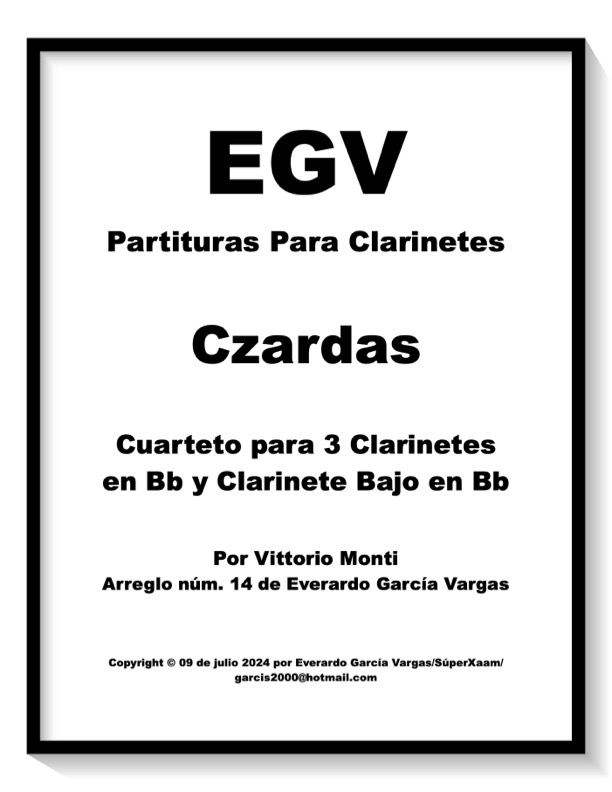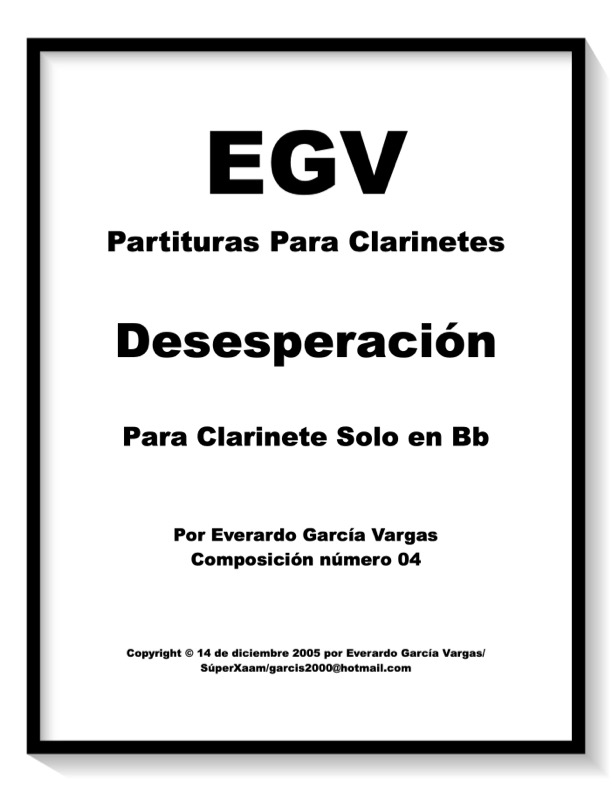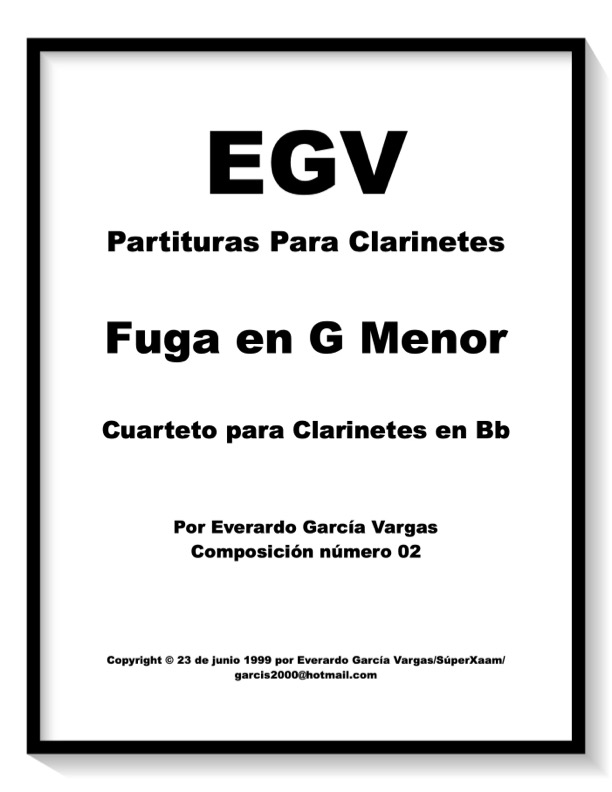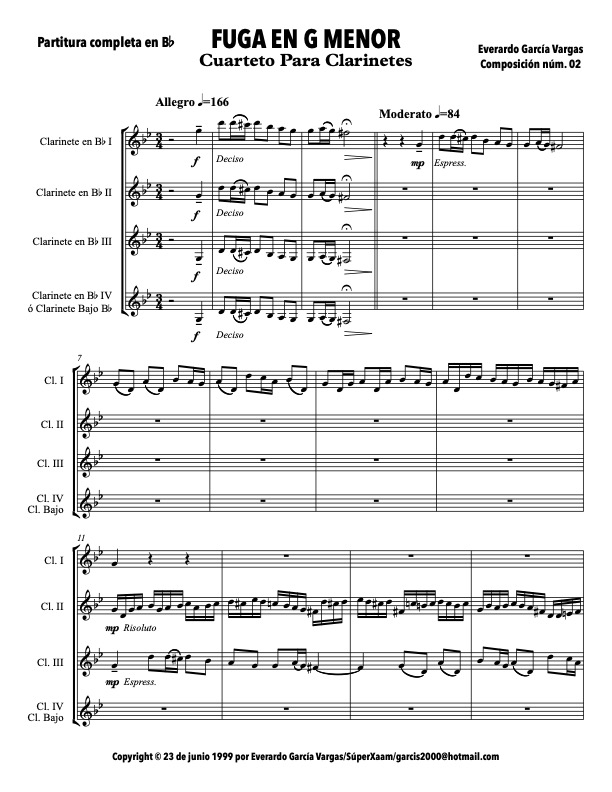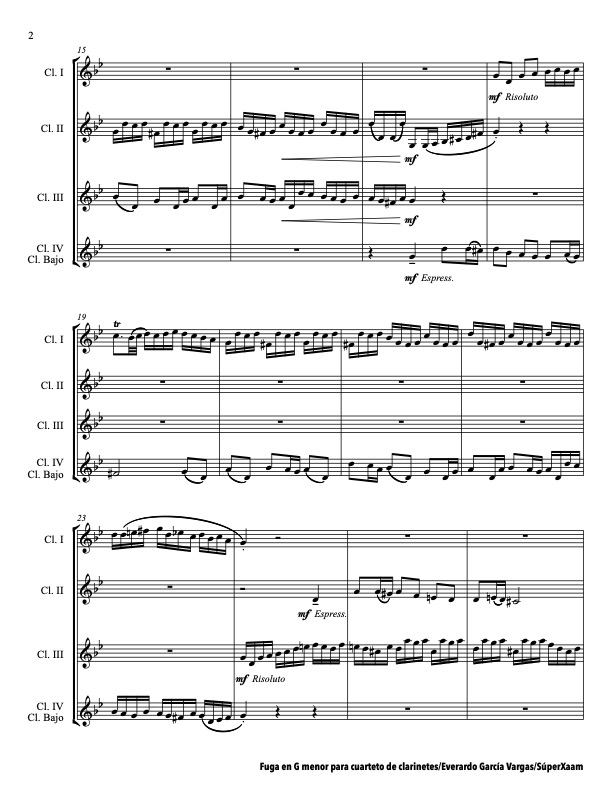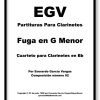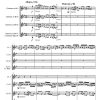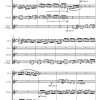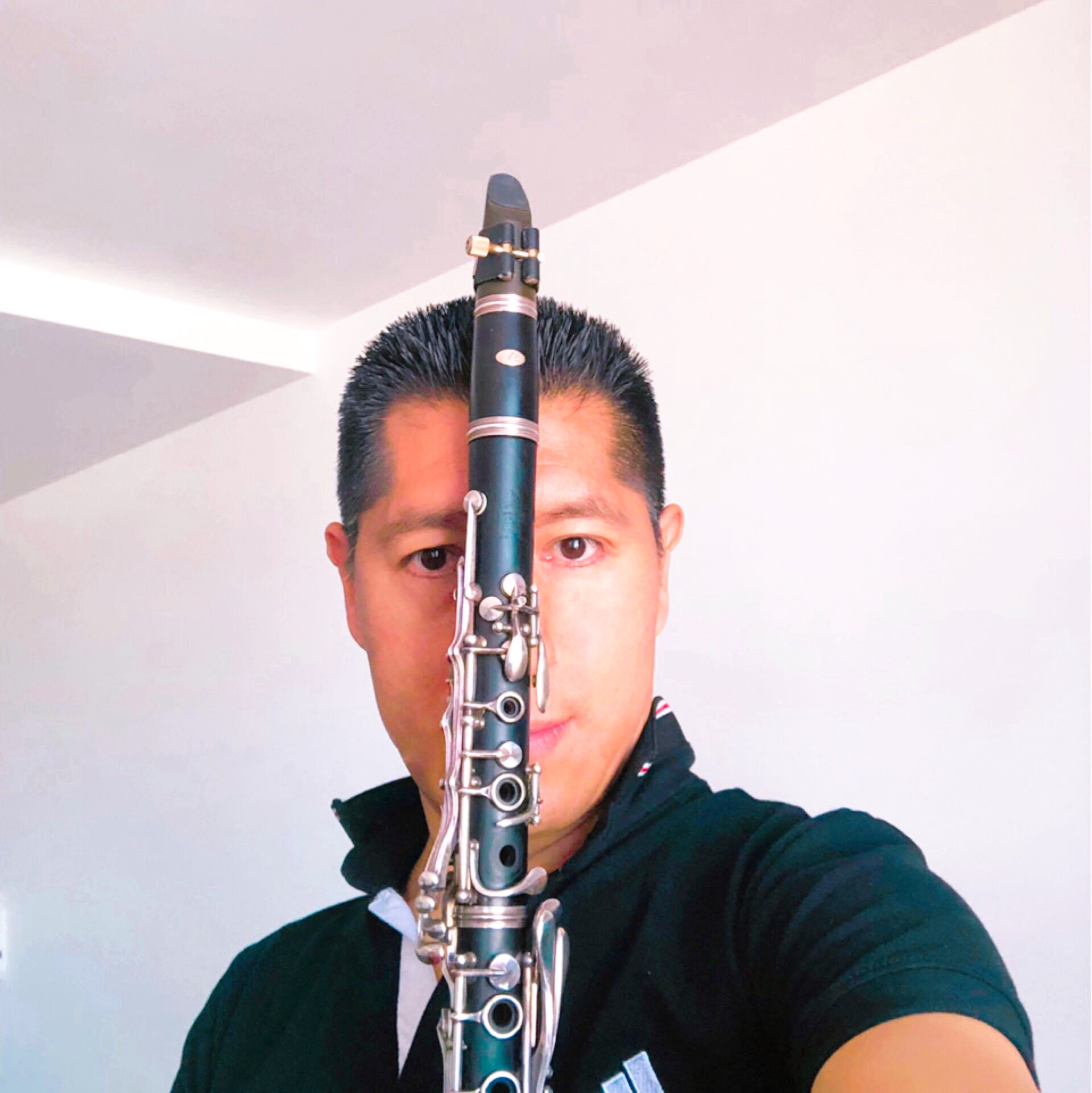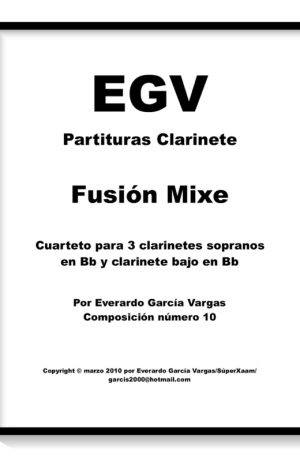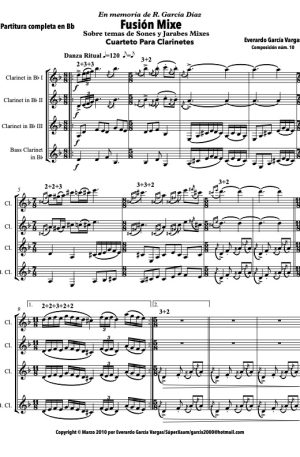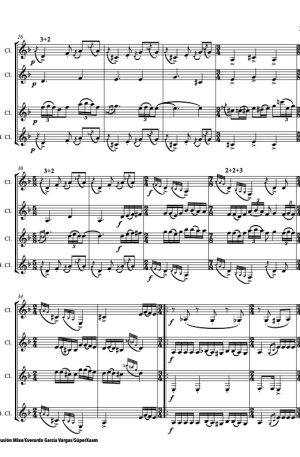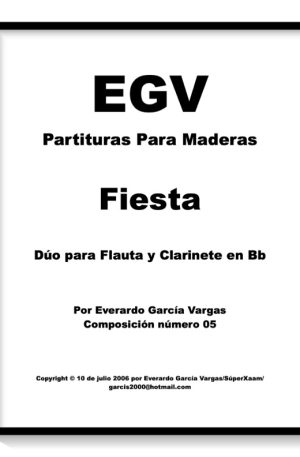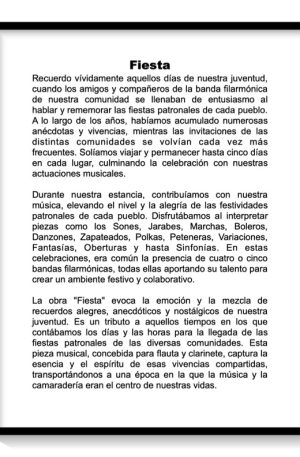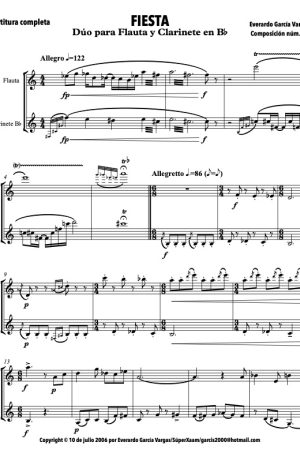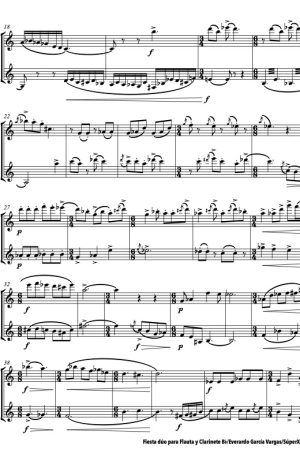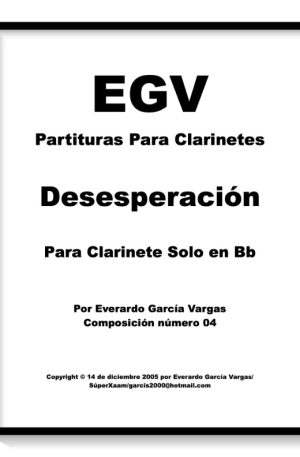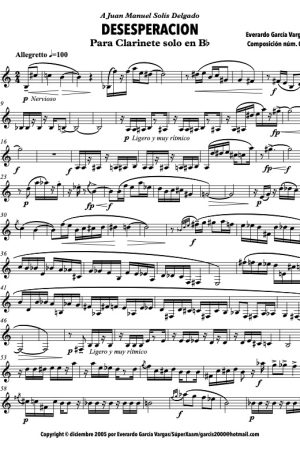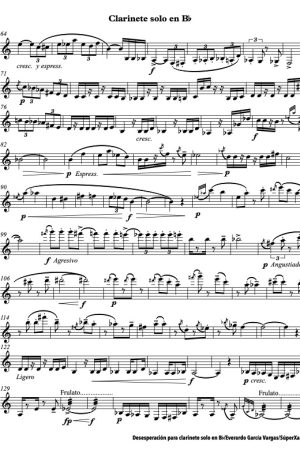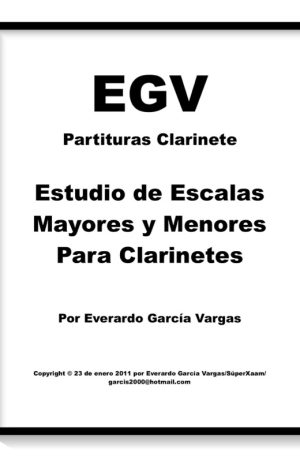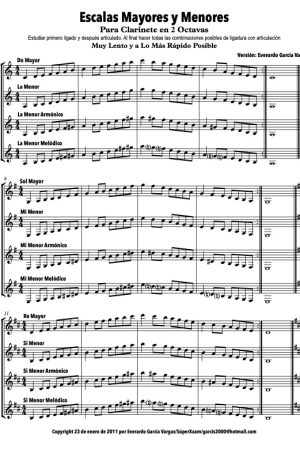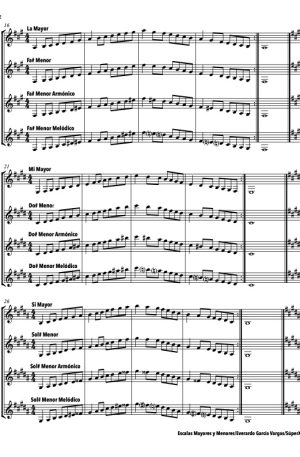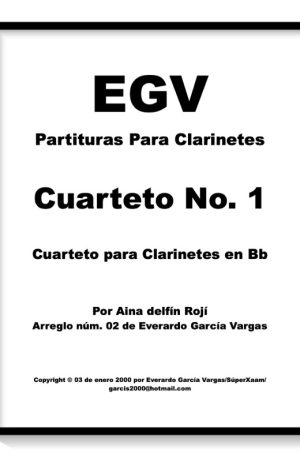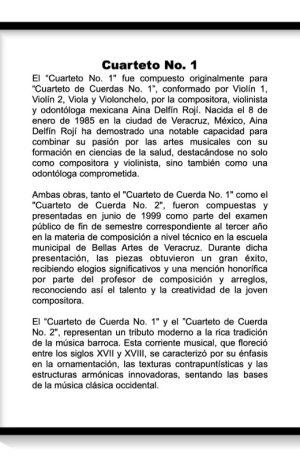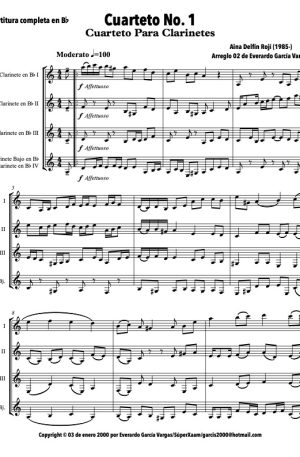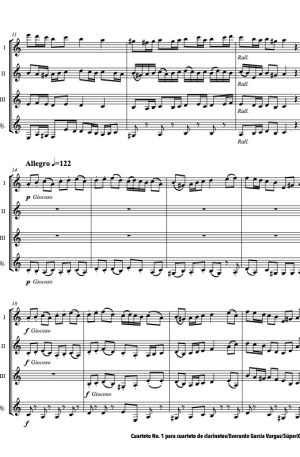FUGUE IN G MINOR Clarinet Quartet – Composition by Everardo García
$38.00
Description
FUGUE IN G MINOR Clarinet Quartet
The fugue is a musical form that emerged during the Middle Ages and enjoyed its golden age between the 17th and 18th centuries, thanks to illustrious musicians of the late Renaissance and Baroque periods: D. Buxtehude (1637-1707), J. Pachelbel (1653-1706), G. F. Händel (1685-1759), and J. S. Bach (1685-1750).
The fugue is recognized for its exploration of counterpoint. During a fugue, the melodic lines of the voices play, develop, and alternate in prominence to create dynamics. Most fugues have three or four voices, but there are also those with more voices and even only two, although this is rare.
Structurally, fugues have several parts. The first and most important is the exposition, which occurs at the beginning of the fugue and consists of the appearance of the main subject or theme, which will be repeated by each voice, although this pattern is not fixed. At some point after the first voice has begun, when it has already fully presented the subject, the second voice reproduces the theme, usually transposed to a fifth higher or fourth lower than the original. It is common for one or more of the intervals in the response to be altered to preserve the tonality without altering the comprehensibility of the subject through counterpoint. These slight variations are called mutations. The process is repeated until all voices have introduced the subject or, in the case of scholastic fugues, the response. In the “Free Fugue,” it is not necessary for all voices to present the theme.
Then comes a free stage in which the composer introduces the subject, either in its original state or modified through mechanisms such as augmentation, diminution, inversion, retrogression, fragmentation, fusion, etc. These introductions are separated by free sections called episodes or divertimenti. The episodes have no formal restrictions, but generally consist of modulations that allow the introduction of the subjects. Many fugues have a contrapuntal mechanism called stretto (narrow), which consists of exposing the subject, response, or countersubject(s) in the different voices, overlapping but at a certain distance, so that the subject sounds simultaneously in two or more voices.
Price is for the full score and parts.
Additional information
| Genre | Baroque Period, Folk and World, Inspirational, Instructional, Modern Classical, Spirituals |
|---|---|
| Level of Difficulty | |
| Quartets |
General Enquiries
There are no enquiries yet.
Related products
-
FUSION MIXE Clarinet Quartet – Composition by Everardo García
- $43.00
- Add to cart0 out of 5Add to WishlistAlready In WishlistAdd to Wishlist
-
PARTY Duo for Flute and Clarinet in Bb – Composition by Everardo García
- $26.00
- Add to cart0 out of 5Add to WishlistAlready In WishlistAdd to Wishlist
-
DESPAIR For Solo Clarinet in Bb – Composition by Everardo García
- $16.00
- Add to cart0 out of 5Add to WishlistAlready In WishlistAdd to Wishlist
-
Major and Minor Scales for Daily Clarinet Study
- $2.50
- Add to cart0 out of 5Add to WishlistAlready In WishlistAdd to Wishlist
-
QUARTET No. 1 Clarinet Quartet – Arrangement by Everardo García
- $26.00
- Add to cart0 out of 5Add to WishlistAlready In WishlistAdd to Wishlist

